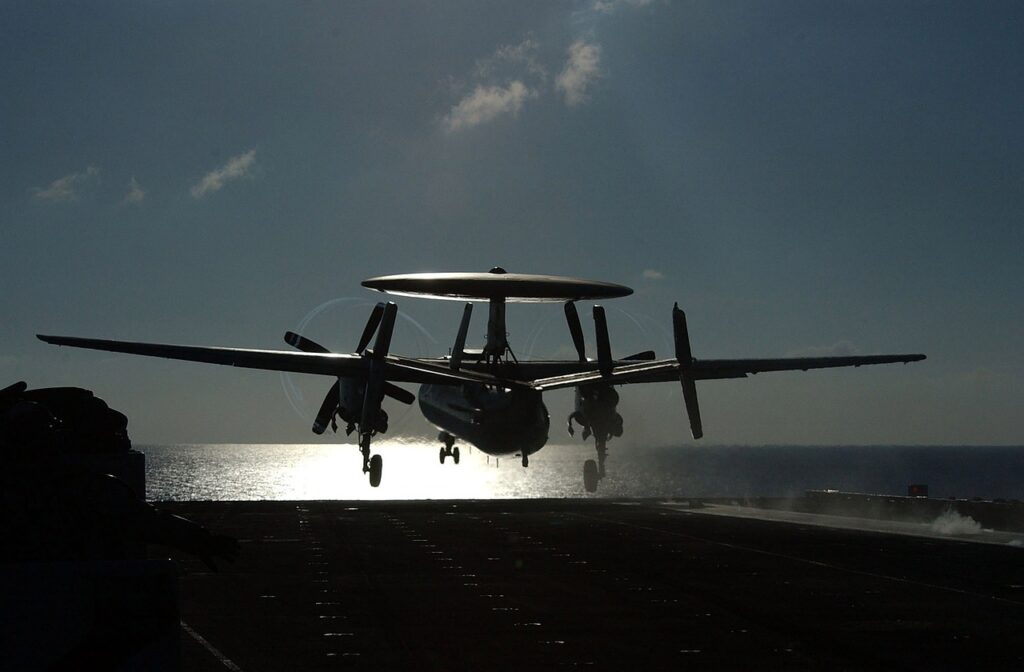
Beijing/Washington: The nations connected by the South China Sea and Taiwan Straits with neighbouring China are, for a long time, anticipating choppy waters in the face of an aggressive Beijing and emerging strategic deployments of the United States of America’s warships there. The US relates its presence in the waterway to the freedom of navigation and to its national interest.
“In exercising the high seas freedoms of navigation and overflight, the United States upholds navigational rights and freedoms and will continue to fly, sail, and operate wherever international law allows,” the US State Department Spokesperson Vedant Patel told journalists in Washington. China today called it USA’s “hegemonic practice”.
There are naval manoeuvres and joint exercises that continue to build up tension in the region and today was an exceptional day when on one hand, the US, Japanese, and Philippine coast guard ships got engaged in law enforcement drills near the South China Sea, and on the other hand, China and Russia conducted joint air patrol over the Sea of Japan, forcing Japan and South Korea to rush fighter aircraft to check the trespassing. Japan claimed Chinese bombers and two Russian drones flew into the Sea of Japan, while South Korea claimed four Russian and four Chinese military aircraft entered the South Korean air defence zone.
Besides, a Chinese research ship and its escort left last night after nearly a month-long of operations in what Viet Nam claimed to be its Exclusive Economic Zone but China counterclaimed to be its own territory. The presence of the ship had invited loud protests from Hanoi but without much impact on China.
As it is, Brunei, China, Malaysia, the Philippines, Taiwan and Vietnam have been locked in tense territorial stand-offs in the South China Sea for decades.
However, within the span of a week, there have been two close encounters between the USA and Chinese forces — one at sea, one in the air, prompting the US National Security Council spokesman John Kirby claim that military interception manoeuvres by Chinese ships and planes suggest a growing aggressiveness from Beijing and could lead to an “accident”.
It may be pointed out that on June 3, 2023, the US Pacific Command claimed that a Chinese navy ship manoeuvred near a US guided-missile destroyer and a Canadian frigate in the Taiwan Strait, and overtook the American ship and veered across its bow at a distance of 150 yards in an “unsafe manner”. The US Navy released a video showing the Chinese warship crossing in front of the US destroyer while calling it an unsafe interaction. Last month too, the US Indo-Pacific Command claimed a Chinese J-16 fighter aircraft flew directly in front of a US Air Force RC-135 plane in an “unnecessarily aggressive manoeuvre”.
Amid escalating tension in the South China Sea and the straits, Beijing today accused Washington of showing off its military muscle near China’s territorial sea and airspace.
“Let me make clear again that the truth is, the US has been sending warships and military aircraft halfway around the world to China’s doorsteps…This is not about “freedom of navigation”, but hegemony of navigation and distinct military provocation. And such hegemonic practice is the root cause of security risks on the sea and in the air,” Chinese foreign ministry spokesperson Wang Wenbin claimed today. He blamed the US for making provocations first and claimed that the Chinese military responded by handling the incident in accordance with relevant laws and regulations which were “completely professional, lawful and justified”.
Responding to a question during a press conference that should any foreign aircraft or maritime vessel expect the same sort of encounter with Chinese jets or ships when traversing these areas, Wenbin counter asked, “Why did all the so-called “unsafe” and “unprofessional” incidents – according to US officials – happen near the airspace and territorial waters of China, but not other countries? This deserves some serious thought”.
However, even the Philippine coast guard has intensified patrols in the South China Sea after a Chinese coast guard ship aimed a military-grade laser that briefly blinded some crew members on a Philippine patrol boat off a disputed reef on February 6, 2023.
The USA, on its part, sounded cautious that it doesn’t seek any kind of new cold war. “Our competition must not spill over into conflict,” Patel said.
– global bihari bureau





